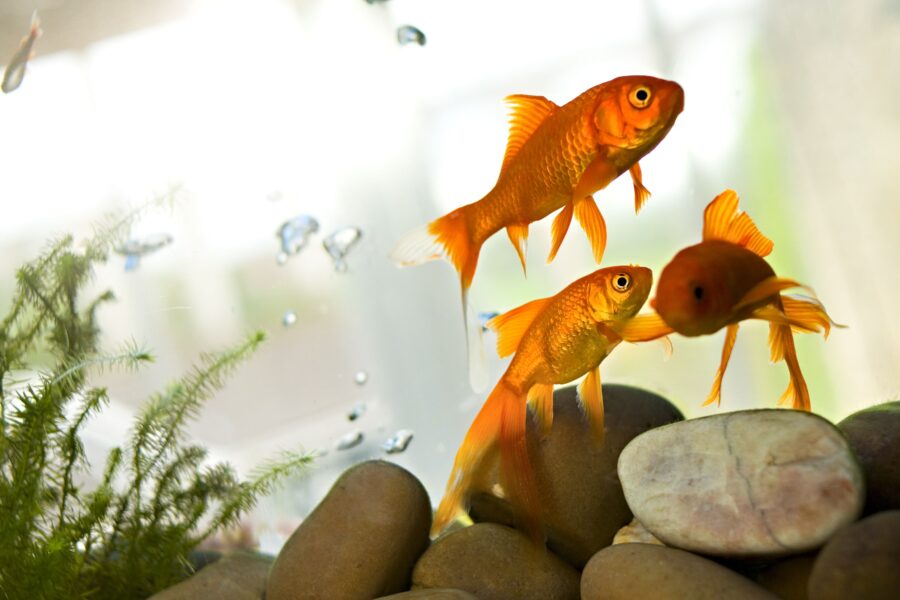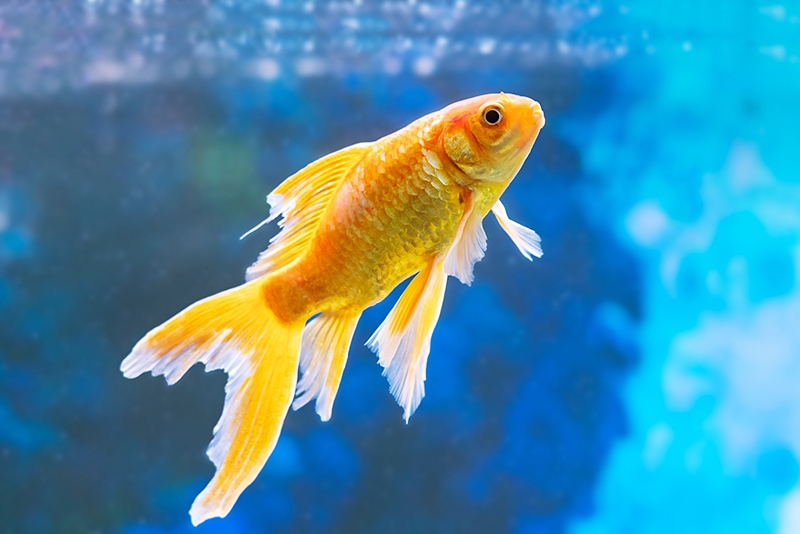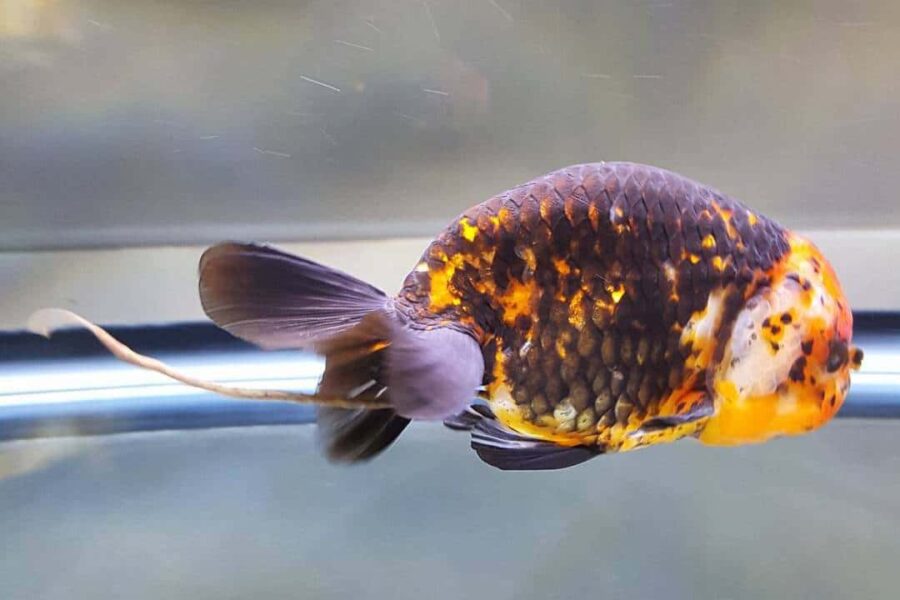
Hello, fish parents! Let’s dive into the nitrate levels in a goldfish tank— a complex topic, but totally tubular when understood. Nitrates in your goldfish tank, they’re not just a fancy word from high-school chemistry. Grasp their essence, and your deranged Dory or melancholic Marlin could turn into jovial Jaws.
High nitrate levels: They’re an uninvited troublemaker, especially for your beloved goldfish. Those unseen culprits could be doing the cha-cha now, torpedoing your innocent swimmer’s health big time. Detecting them early, or yet, swinging into action before they’re even on the dance floor, saves you heartbreak and your fish, a lot of discomfort. We’re dishing out nitrate scoop — detecting, reducing, and prohibiting the ‘Nasty N’. Ready? Let’s belly-flop into the action!
Understanding Nitrate Levels in a Goldfish Tank
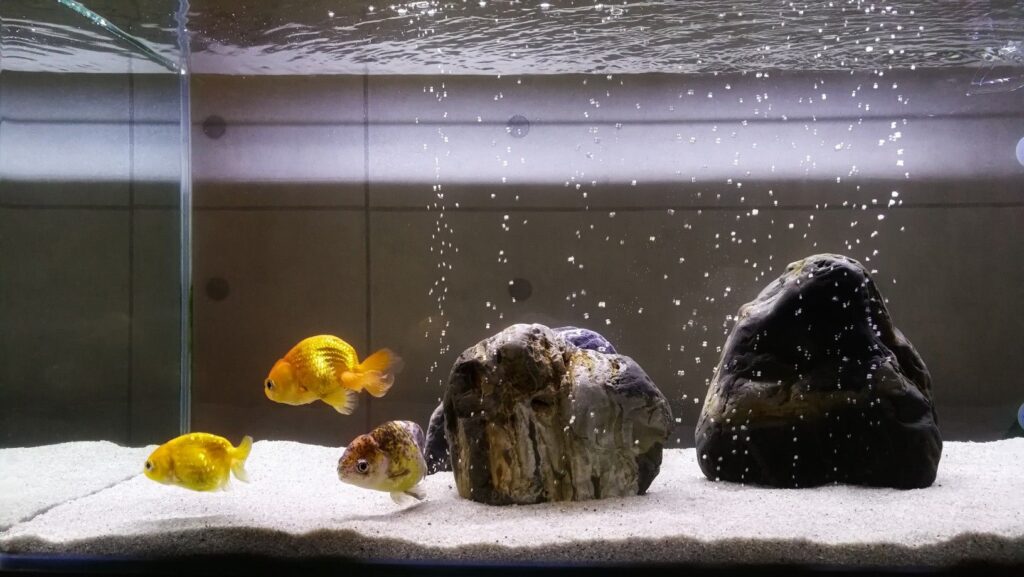
Your goldfish is chilling in his tank, flipping around like a pancake in a zero-gravity kitchen. You think everything seems fine. But then you remember about nitrates.
The Importance of Nitrate Levels in a Goldfish Tank
Here’s a bit of fishy science for you, straight out of the underwater CSI lab. Nitrates are part of the delightful cycle known as nitrogen cycling. They are the last byproduct excreted after fish waste goes through its bacterial transformations. It’s like a chemical endgame. These nitrates seem harmless, but high levels of them are far from ideal for your slimy chums. They can dramatically affect their health and happiness. Let’s dive into the deep blue to understand this better.
Possible Sources of High Nitrate Levels
High nitrate levels can sneak in unnoticed. The most common suspects are overfeeding (those ever-hungry eyes are tricky), too many fish in a tank, and inadequate water changes (yeah, I’m looking at you with your two-week-old fish water). Also, dying plants or fish can contribute to an increase. It’s like your tank’s own episode of “Poirot”, but with more finned suspects.
Having gotten a bit sciencey and solved some mysteries, let’s keep swimming to uncover the dangers lurking beneath the surface. Get ready to shine a light into those dark aquarium corners.
The Danger of Elevated Nitrate Levels in a Goldfish Tank
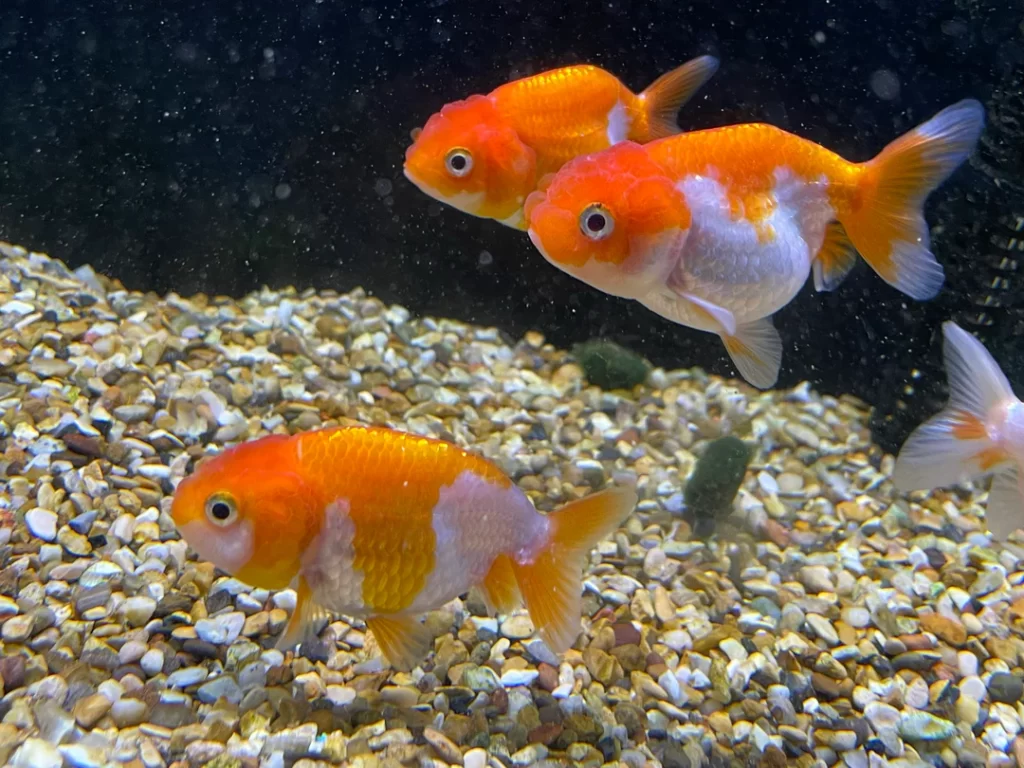
Once nitrates sneak into the Fishy Hollywood you’ve built, they make it rather unsuitable for our scaly celebrities. Beware, this stunt may rob the charm from your goldfish tank!
Effects of High Nitrate Levels in a Goldfish Tank
Hit the gills first! High nitrate levels in the water act like a slow poison and damage our goldfish’s respiratory organs. Fatigue sets in as Gill-and-Finn Co. struggles to extract enough oxygen from the soupy nitrate brew they’re paddling in. They also become susceptible to infections due to a weakened immune system – imagine catching a cold every time you go swimming!
Excess nitrate can also affect their tiny golden hearts. Yup, that’s right! Goldies can suffer from a reduced heart rate. Have you ever tried to swim with a weight belt while nursing a cold? The goldfish equivalent, folks!
Long-Term Impact on Overall Fish Health
Can goldfish grin and bear it? They’re strong, sure, but prolonged exposure to high nitrate zaps their energy, reducing their growth and life expectancy. Over time, your party-loving goldfish might just throw in the towel and spend more time laying at the bottom of the tank or fins-up.
High nitrate could also impair their reproduction, and we’d hate for the family line to stop at Uncle Bubbles, wouldn’t we? Nitrate-induced stress might even change our sociable golden guys into jittery reclusives. It’s safe to say, nitrates are party-poopers!
So that was the “scary movie” part. Now let’s move on to the action bit. How do we arm ourselves and our scaly friends against this invisible enemy? Well, that’s coming up next in ‘Testing for Nitrate Levels.’
Testing for Nitrate Levels
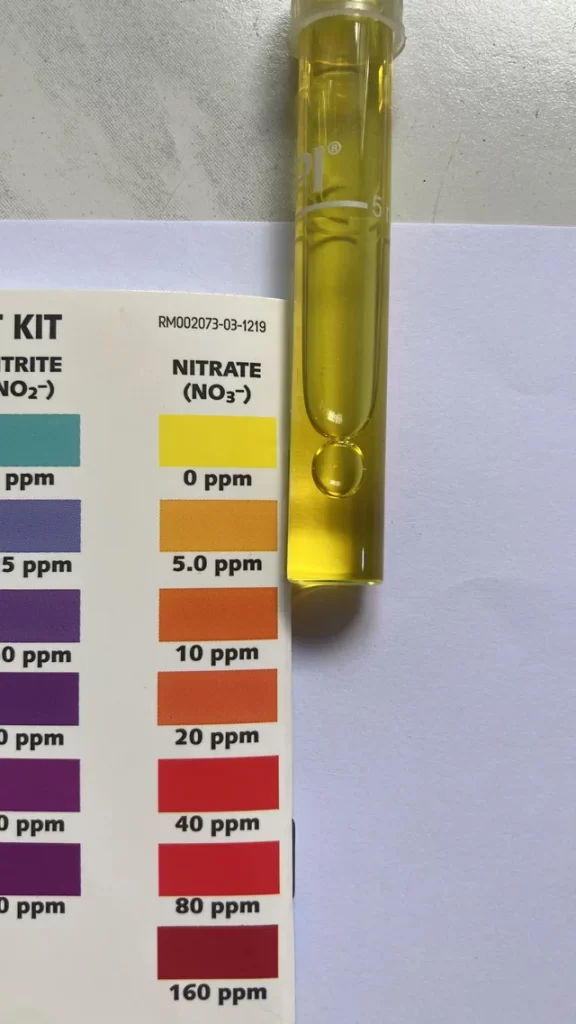
Well, we’ve talked about the ‘why’ and ‘what’ of nitrate levels. Now let’s dive (pun intended) into the ‘how’ of testing those levels. No need to worry, it’s as easy as pie!
Choosing a Testing Kit
When it comes to fish tanks, all that glitters is not gold. Nitrate testing kits are a goldfish owner’s treasure chest. So, which one should you buy? Plenty good ones are swimming out there in the market. Your local pet store or online marketplaces like Amazon have solid options. Look for one that tests for a variety of water parameters (like pH and ammonia along with nitrate) and is user-friendly. Remember to put in a pinch of common sense and a dash of research!
Understanding the Results
Okay, so you’ve grabbed a testing kit. Now, let’s make some sense of the results. Typically, a safe nitrate level for your glittering goldfish is below 20 ppm (parts per million). If it’s turning up higher, it’s a red flag, buddy! However, if you see a reading of 0 ppm, too, don’t cheer yet. Zero nitrates often means the nitrogen cycle in your tank isn’t established yet.
By now, you’re likely wondering what to do if your tank flunks the nitrate test. No worries! Our next section will guide you on how to take back control and bring those nitrate levels down to a safe range. Stay tuned and, as our fishy friends say, ‘just keep swimming’!
Reducing High Nitrate Levels in a Goldfish Tank
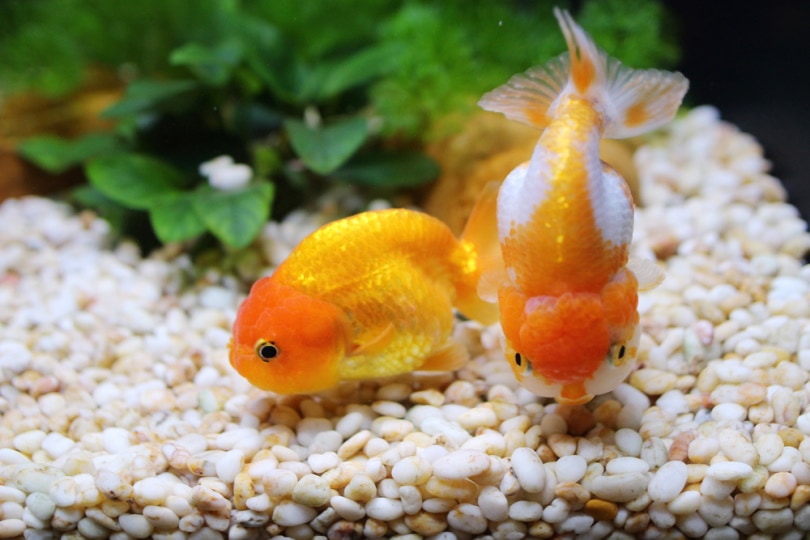
Now, raise your flippers if you’ve been painfully nodding along to the nitrate horror stories and thinking, “Oh snap, my goldfish tank might just be a scene from ‘Nitrate Nightmare’.” Don’t throw in the towel yet. We have good news: There are excellent ways to reduce those villainous nitrates.
Frequent Water Changes
First stop on this rescue mission: Frequent water changes. Remember, Nitrates build up over time. Unless your fishes have developed the uncanny power to clean up after themselves (hint: they’d rather play ‘hide and go eat’), you’re the designated janitor. Changing a third of your tank water weekly helps dilute nitrate concentration. Super easy, right?
Using Nitrate-Specific Products
Next, we could go all high-tech and fancy. Nitrate-specific products, folks! These additives and specialty filters go all ‘mission impossible’ on nitrates, helping you send them packing. Just be sure to follow the instructions. Overdose and your tank could turn into a nitrate Ghost Town. Interesting enough, but not the goal.
Feasibility of Natural Remedies
For the lovers of all things green and environment-friendly out there, let’s chat about natural remedies. Plants are not only pretty to look at but they also consume nitrates like nobody’s business. So, consider adding live plants like Anubias or Java Ferns to your tank. It’s like having extra housekeepers who work for free. Environmental and pocket-friendly, you might say!
Transitioning from transforming your tank into a nitrate-safe haven, remember, “An ounce of prevention is worth a pound of cure.” So, let’s dive right into how we can prevent this nitrate build-up from happening in the first place. Meet you in the “Preventive Measures” aisle, sports fans!
Preventive Measures

Acting is always better than reacting, especially when it comes to the health of your fancy-scaled friends. Because, my friend, prevention is the first step on the path to a nitrate low-life. So, buckle up, as we dive headfirst into the preventive measures to keep those nitrate levels grounded.
Maintaining Optimal Tank Conditions
Now, creating a Bahamian escapade in your living room sounds breathtaking, doesn’t it? But more than the decor, focus on maintaining optimal tank conditions. Keep the water temperature stabilized around 65-75 degrees Fahrenheit and closely monitor the pH, hanging around the sweet spot of 7.0 – 8.0. Make sure your tank’s filtration is working efficiently to detoxify the water. Regular tank cleaning, including a good gravel vacuum, is not just necessary; it’s sanity for your gilled buddy.
By the way, were you underestimating the oomph of live plants in that tank? Live plants gulp down the nitrates and keep the water sparkling clean. So, add some greenery, and the tank will look vibrant and nitrate-humbled.
This brings us neatly to our next goldfish guardian duty: feeding habits.
Proper Feeding Strategies
Feeding is a test of love (and patience). Overfeeding sounds like a sign of affection, but it’s a ticket to Nitrate-ville. Feed your delightful companions only as much as they can eat in 2 minutes and any excess food floating around? Scoop it out before it has the chance to decompose and skyrocket the nitrate levels.
Remember, overfeeding = over-pooping = over-nitrating. It’s a chain reaction, folks! And it’s vital to break it.
Now, to the last piece of our preventive measures puzzle: stocking the goldfish community prudently.
Appropriate Goldfish Population
Goldfish are like little water puppies. They’re adorable. They’re entertaining. But, overcrowd them, and they become stress bombs, sprouting nitrates left and right. Hence, it’s important to consider the size of the tank before deciding on the number of fish. A good rule of thumb is to allow 20 gallons for the first goldfish and an additional 10 for every goldfish after that.
In essence, remember the golden rule of responsible pet owners: what’s best for your pet is often what’s best the environment you provide them.
We’ve covered the fantastically complex world of nitrate levels, their dangers, and how to vanquish them. Hopefully, you’re armed and ready to tackle any nitrate uprising. But remember, when you’re dealing with a nitrate rebellion, always remain calm and fish on!
To Sum Up
Understanding nitrate levels, especially their sources and importance in a fish tank, is crucial. This awareness is the first step in safeguarding the health of your golden gill companions. Elevated nitrate levels pose a grave danger; they can have an array of immediate and long-lasting impacts, particularly for goldfish.
The article also highlights testing for nitrate levels. From selecting the right kit to interpreting the results, it’s a crucial step. To counter high nitrate levels, frequent water changes, nitrate-specific products, and even natural remedies can help. Lastly, preventive measures such as optimal tank conditions, proper feeding, and maintaining an appropriate goldfish population can ensure long-term aquatic bliss. Now go on, unleash your newfound wisdom on that fish tank!
Frequently Asked Questions (FAQ)
Question: What are safe nitrate levels in a goldfish tank?
Answer: Nitrate levels in a goldfish tank should ideally be less than 20 ppm (parts per million). However, goldfish can tolerate up to 40-50 ppm.
Question: How can I find out the nitrate level in my tank?
Answer: You can use a nitrate testing kit available at pet stores or online to measure nitrate levels in your fish tank. Follow the instructions on the package for accurate results.
Question: What can cause high nitrate levels in a goldfish tank?
Answer: Common causes include overfeeding, overstocking the tank, decaying plant material, and infrequent water changes.
Question: Can high nitrate levels harm my goldfish?
Answer: Absolutely! Sustained high nitrate levels can cause health issues for your fish, including reduced immunity, poor growth, and even death in severe cases.
Question: What can I do to reduce nitrate levels in my goldfish tank?
Answer: Frequent water changes, avoiding overfeeding, using nitrate-specific products and maintaining a suitable number of fish in the tank can help. Some owners also use live plants as natural nitrate filters.
Question: Is there a way to prevent nitrate build-up in the first place?
Answer: Yes, regular maintenance, proper feeding, and good population management can prevent excessive nitrate build-up. Be proactive, not reactive – your goldfish will thank you!

